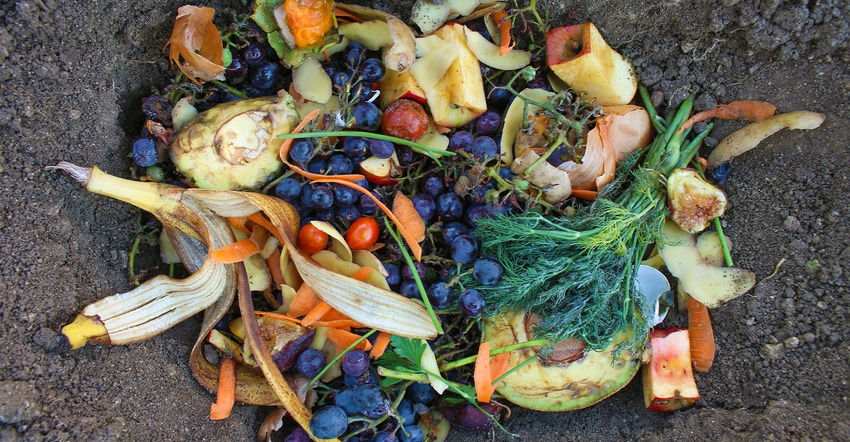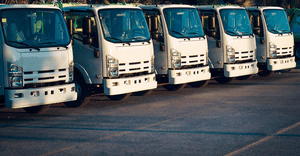Canada’s Fight on Food Waste

In 2015, Canada committed to work toward halving food waste and loss along the entire supply chain, from farm to plate, by 2030 –in line with the United Nations Sustainable Development Goal 12.3. With eight years to go, Canada, not unlike many countries, struggles to reach that target.
Recent research estimates that 20 to 30% of all food produced in that country annually becomes food loss or waste – with most of it destined for landfill or incineration, says Samantha Bayard, spokesperson, Environment and Climate Change Canada (ECCC), the department of the Canadian government responsible for coordinating environmental policies and programs.
This loss and waste occur throughout the entire supply chain. Addressing the problem at each step of the process can save Canadians money, improve the competitiveness of the agri-food sector, and help to reduce greenhouse gas emissions, state the authors of a government report, Taking Stock: Reducing Food Loss and Waste in Canada, which explores where and why food loss and waste happens along the food chain, such as production, transport, processing, and retail.
Canada’s public and private sectors are trying to better understand and address the issues, though opportunities remain to enhance and strengthen these efforts, Bayard says.
From federal government’s investments in research and infrastructure to provinces’ and municipalities’ action plans, the food waste fight is a work in progress. Here’s a dive into what some of these entities are doing:
Beginning with work at the federal level, researchers working for the Canadian Council of Ministers of the Environment identified these as universal challenges across Canada:
Technical
lengthy process and cost of obtaining facility approvals;
geographical challenges posed by climate and challenges between urban/suburban/rural landscapes and population densities;
challenges of implementing source-separated organics (SSO) diversion programs in multi-residential buildings;
inconsistency and contamination of SSO streams; and
challenges around consistency with end-product quality (e.g. compost/digestate).
Financial
need for increased funding for SSO programs and infrastructure;
low disposal costs compared to diversion;
lack of incentives for diversion;
low market value for end products generated from processing SSO.
Social
perceived or real inconvenience of diversion over disposal;
lack of awareness and understanding of waste management options/services beyond disposal;
lack of knowledge on how to participate in diversion programs and what materials can be diverted.
In 2020 the Government of Canada established two primary goals to try and address the problems:
1) Develop new methods to increase the number of landfills that collect and treat their methane and ensure that landfills already operating these systems make improvements to collect all they can.
2) Explore opportunities to support waste and biosolids management infrastructure, including composting, anaerobic digestion, and landfill methane collection and use.
In addition, ECCC published a technical document on municipal solid waste organics processing to provide technical information to serve as a reference for local governments when evaluating approaches for processing organic waste.
Adding to the resource piece, the Canadian government has invested in waste management infrastructure, such as through the Low Carbon Economy Fund (LCEF) and the Investing in Canada Infrastructure Program (ICIP). A few examples include: BC’s Organics Infrastructure Program, which used LCEF funding to support several organics processing projects. And the city of Peterborough in Ontario received funding from the LCEF to apply toward implementation of a citywide organic waste collection and composting program expected to launch in fall 2023.
At the provincial level, regions such as British Columbia, Ontario, and Quebec, have developed their own action plans.
Among Ontario’s priorities for instance are:
Working with municipalities; the industrial, commercial, and institutional sectors; and non-profit organizations to develop educational tools and resources to prevent food waste. The province has looked to increase resource recovery within school communities through waste audits, workshops, and skill-building sessions for the school community. And its interests are in working with food service providers, retailers, wholesalers, and producers to rescue surplus food for donation and to promote development of value-added products. As much a priority to Ontario has been working to develop data collection mechanisms to measure progress in waste reduction and recovery of food and organic waste.
In Quebec 60% of municipalities offer source-separated organics collection or domestic/community composting, according to RECYC-QUÉBEC. But like neighboring provinces, it still has a big problem: it generates about 1.5 million tons of food, yard, and other compostable waste a year, accounting for 30% of its disposed garbage.
Having set, among its targets, implementation of organic matter management on 100% of municipal territory by 2025, Quebec has a multipronged approach.
The province is working to address a barrier to diversion posed by cheap disposal rates. Among strategies is reducing trash pick ups and/or setting limits on how much trash residents can leave by the curb, while offering more frequent recycling collections and placing no restrictions on the amount of recyclables that can be put out.
Quebec’s action plan includes components such as information and public awareness with support from the National Zero Waste Council; studies on food loss and waste (in progress); and a recent study on the link between packaging and food loss.
Many municipalities have set their own food waste reduction goals and implement organic waste management and outreach programs.
It is perhaps at the local level that Canada has made most progress; 83% of Canadians live in areas that have access to curbside leaf and yard waste programs, and 71% have access to curbside source-separated organic programs, according to the Environmental Research & Education Foundation of Canada (EREF-Canada).
Some examples of municipal-level work include the City of Toronto’s Long-Term Waste Strategy, Metro Vancouver’s Regional Food System Action Plan, and York Region’s Good Food Program.
For more information on how Canada is doing in the organic waste management space, see EREF-Canada’s July 2021 report, State of the Practice of Organic Waste Management and Collection in Canada. It looks at all 10 provinces and three territories to gauge organic waste policies and approval/permitting regimes; organic waste diversion program availability across the country; the number of organic waste processing facilities, their capacities, and tons processed; and targets or goals.
About the Author(s)
You May Also Like




